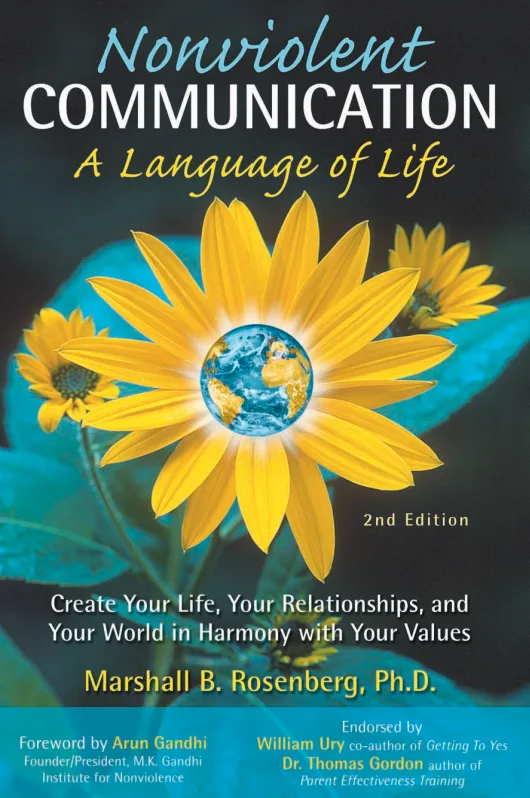
Communication doesn’t have to be adversarial to be effective. In Nonviolent Communication , Dr. Marshall Rosenberg shows how to express ourselves honestly and listen empathetically by focusing on universal human needs. This approach transforms conflict into connection, helping us navigate disagreements with compassion, clarity, and mutual respect—both in life and work.
Nonviolent Communication: A Language of Life by Dr. Marshall B. Rosenberg is a transformative guide to compassionate communication that fosters understanding, empathy, and peace in both personal and professional relationships.
Rosenberg, a clinical psychologist and internationally renowned mediator, developed Nonviolent Communication (NVC) as a way to resolve conflicts and build deeper connections by focusing on shared human needs rather than blame, criticism, or demands. His method has been used worldwide in conflict zones, schools, businesses, prisons, and families.
At its core, NVC teaches that violence—whether verbal or physical—stems from unmet needs and ineffective communication . Rather than seeing people as adversaries, Rosenberg encourages us to see them as individuals whose actions are attempts to meet universal human needs like respect, safety, love, and understanding.
The book introduces a simple yet powerful four-step model:
This framework helps readers shift from reactive, defensive communication to empathetic dialogue that honors both themselves and others. It also includes guidance on how to listen deeply , even when others are angry or hostile, and how to stay connected amid disagreement.
One of the most impactful lessons is the distinction between “Jackal” language —which includes blaming, comparing, diagnosing, and demanding—and “Giraffe” language , symbolizing heart-centered, empathetic communication (the giraffe being the animal with the biggest heart in the animal kingdom).
Rosenberg emphasizes that NVC is not about being “nice” but about being authentically honest while remaining compassionate . He provides tools for expressing anger without blame, resolving interpersonal tension, and connecting across differences.
Throughout the book, real-life examples illustrate how NVC can be applied in difficult situations—from parenting challenges and workplace conflicts to international peacemaking.
Nonviolent Communication is more than a communication technique—it’s a philosophy and practice for living with greater empathy, authenticity, and connection. Whether you’re looking to improve your relationships, manage conflict peacefully, or become a better listener, this book offers life-changing insights.
It’s particularly valuable for educators, mediators, therapists, leaders, parents, and anyone seeking to communicate with more compassion and clarity.